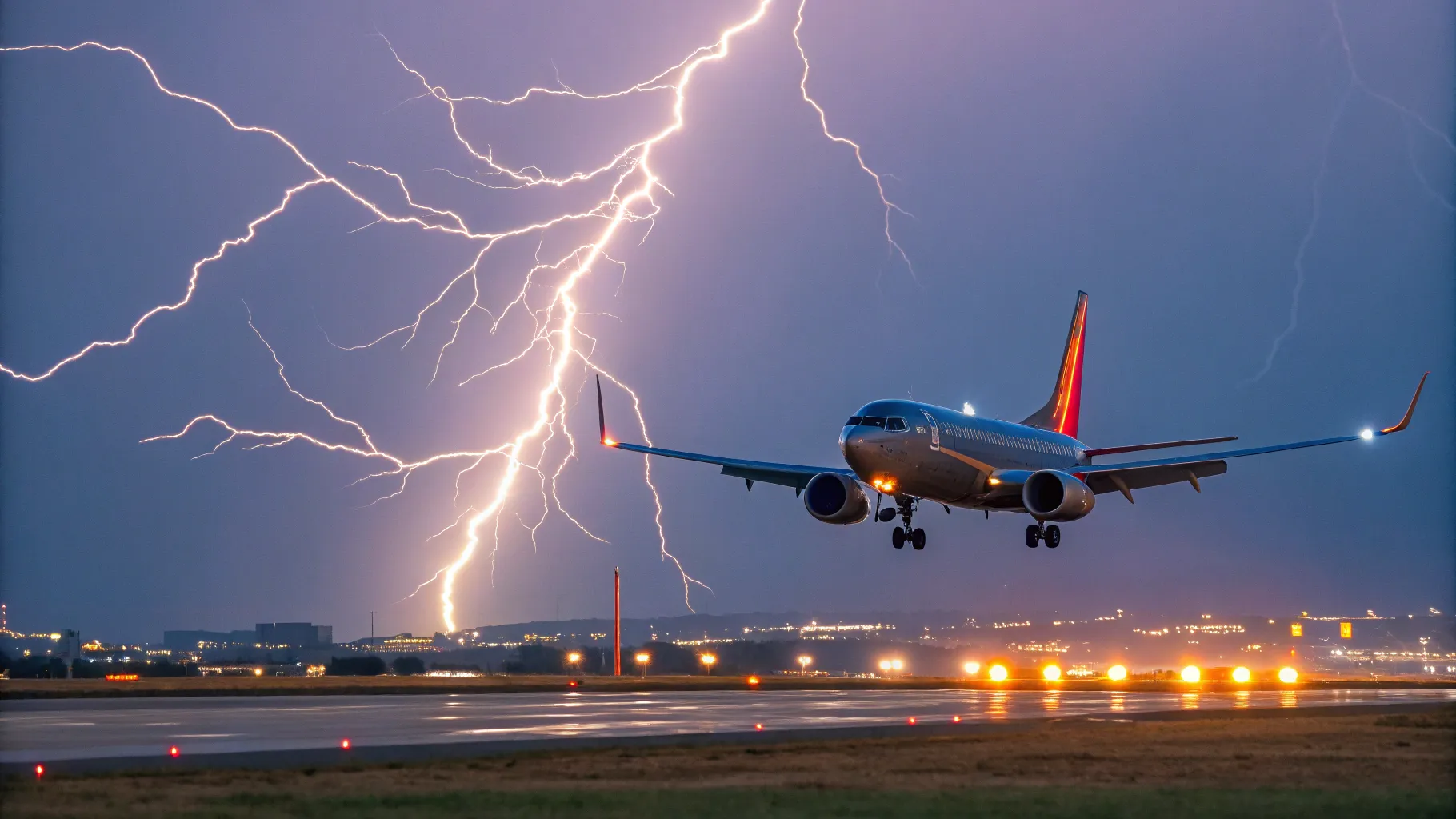
A Southwest Airlines flight experienced a lightning strike incident on Sunday as it approached Denver International Airport. Flight 168, which originated from Tampa, Florida, was hit by lightning during its final descent into Denver.
The aircraft was completing its scheduled route when the weather event occurred. No immediate reports of injuries or significant damage have been released following the incident.
Weather Conditions and Flight Details
The lightning strike happened as the aircraft was in its approach phase to Denver International Airport. This phase of flight is particularly critical as pilots are configuring the plane for landing while managing changing weather conditions.
Sunday’s weather in the Denver area featured thunderstorm activity, a phenomenon not uncommon during certain seasons. Lightning strikes on aircraft, while concerning, are events that modern commercial planes are designed to withstand.
Flight 168 was operating a standard route between Tampa International Airport and Denver, a journey that typically takes approximately three and a half hours, covering over 1,500 miles.
Aircraft Safety Systems
Commercial aircraft, such as those in Southwest’s fleet, incorporate specific design features to handle lightning strikes. These safety measures include:
- Composite material construction that helps dissipate electrical charge
- Built-in lightning protection systems
- Shielded fuel systems to prevent ignition
- Protected navigation and communication equipment
When lightning strikes an aircraft, the electrical current typically enters at one point. It exits at another, traveling along the exterior skin of the plane without affecting internal components or passengers.
Airline Response and Protocols
Following such incidents, airlines have standard protocols that include thorough inspections of the aircraft before returning it to service. These inspections verify the aircraft’s structural integrity, electrical systems, and navigation equipment for any potential damage.
Southwest Airlines has a strong safety record and established procedures for handling weather-related incidents. The airline’s maintenance teams are trained to identify and address any issues that might result from lightning strikes.
Pilots are also trained to handle such situations and follow specific procedures when flying through areas with thunderstorm activity. This includes working closely with air traffic control to navigate around severe weather when possible.
Passenger Impact
For passengers, lightning strikes can be a startling experience, often accompanied by a bright flash and a loud noise. However, modern aircraft are designed to ensure passenger safety during such events.
The Federal Aviation Administration (FAA) estimates that each commercial aircraft in the U.S. fleet is struck by lightning approximately once per year on average, highlighting that while dramatic, these incidents are not uncommon in commercial aviation.
Southwest has not released information about any delays or disruptions to subsequent flights using the same aircraft, which would depend on the results of post-incident inspections.
The incident serves as a reminder of the various weather challenges that commercial aviation faces daily and the safety systems in place to address them. Despite the dramatic nature of lightning strikes, the aviation industry’s focus on safety design and protocols continues to make air travel one of the safest forms of transportation











Howie Jones
My name is Howie and I'm a Customer Success Manager at Calendar. I like to ensure our customers get the best experience using our product. If you have questions email me howie at calendar.com